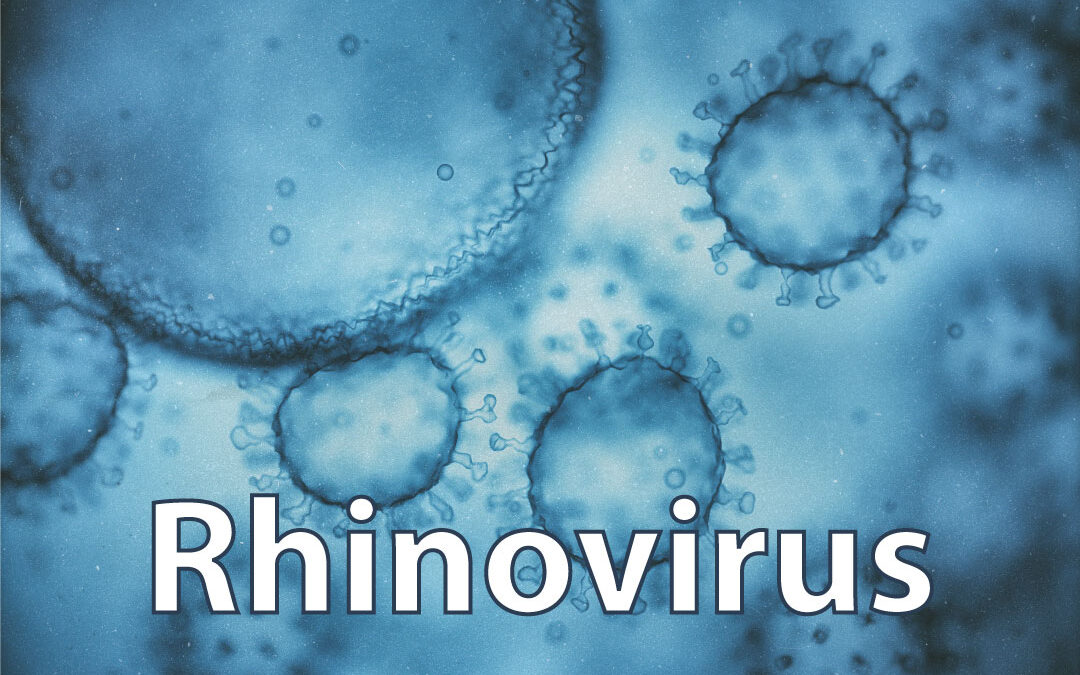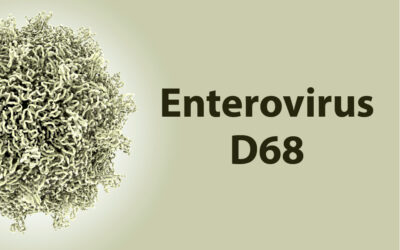Listen to this blog article
Globally, Human Rhinovirus (HRV) infections are the main cause of what we refer to as the common cold. HRV infections make up around one-half to two-thirds of common colds and are mostly seasonal, with infections peaking during the spring and/or autumn months. HRV infections can cause all the characteristic cold symptoms we experience, such as a runny nose, sore throat, headache, cough, and occasionally muscle aches and weakness, a mild fever, and ear/sinus infections.
HRV transmission is usually through nasal secretions but can also occur via several alternative routes, such as fomites, aerosols, or direct contact. Direct contact, for example, means hand contact with virus-contaminated surfaces and transferring this to the nose. These transmission characteristics – combined with evidence that shows HRVs can remain infectious on hard surfaces for hours or nasal secretions for days – create the opportunity for easy person-to-person spread in crowded or under-ventilated areas*.
HRVs were discovered more than 50 years ago and, traditionally, were assumed to cause a benign illness localized to the upper respiratory tract. However, in more recent times, it has been noted that infections can also occur in the lower respiratory tract and, in susceptible individuals, aggravate asthma, chronic obstructive pulmonary disease, bronchiolitis, and pneumonia. Some of these conditions require hospitalization. Given the lack of an effective vaccine or approved antiviral drugs and with high infection frequencies (children can be infected eight to 12 times a year, and adults two to three times per year**), HRVs have a heavy economic burden.
What are Rhinoviruses?
HRVs belong to the Enterovirus genus in the Picornaviridae family and are separated into three genetically distinct species or groups (A, B, and C). Older methods of classifying new HRV isolates have been superseded by modern approaches. These modern classifying methods heavily rely on genetic sequence comparisons and use species letters (A, B, or C) and type numbers (e.g., A60 or HRV-A60). There are three known HRV groups, and despite accounting for over half of infant HRV infections, HRV-C strains were only recently discovered (in the last 20 years). Research addressing HRV group C is severely hampered by the inability of researchers to grow members of this group in standard cell culture systems. The reasons for this are not entirely clear, and this is most likely what’s responsible for the delayed discovery of group C HRVs.
Akin to other Enteroviruses, HRVs have a positive-sense (message ready to decode to make protein), single-stranded RNA genome. The genome is translated into a single long polypeptide, which is cleaved into 11 individual viral proteins. The genome is encased in a 30-nm icosametric capsid of VP1, VP2, and VP3 proteins on the outside and VP4protein on the inside. Thus, HRVs are very small non-enveloped viruses. As Rhinoviruses lack envelopes, their properties differ from those of enveloped viruses. For example, they are resistant to non-ionic detergents but are sensitive to commonly used ionic detergents, such as sodium dodecyl sulfate (SDS). A key feature distinguishing HRVs from other Enteroviruses is that HRVs are not viable at pH 3.
Therapeutics
HRV Antivirals
Despite many decades of work and promising in vitro results, an effective licensed therapeutic has still to be realized. There are many reasons for this, but the major barrier is that, when translated to the natural infection, treatments that were promising in vitro fail to show efficacy or useability in real-world settings. Therefore, there is a large unmet therapeutic need for rhinovirus antivirals.
HRV Vaccines
As for HRV vaccines, after decades of work, there is no licensed vaccine, and it has been suggested that the task is almost impossible because of a failure to achieve cross-protection between serotypes. And it seems a HRV vaccine is likely to remain elusive given the existence of at least 160 HRV strains or serotypes, with significant sequence diversity in the antigenic sites; HRVs are the most diverse group of Picornaviridae. A successful HRV vaccine would need to elicit protective neutralizing antibodies to cover all distinct types spanning the three groups, posing a significant challenge for future research.
What VRS can provide for you
At VRS, our team of expert virologists works with HRV, helping scientists worldwide develop solutions addressing the large therapeutic gaps associated with the common cold. We have developed assays to assess the anti-HRV activity of compounds or solutions, quantifying viral replication with readouts using either fluorescence imaging or cytopathic effects. If VRS can help advance your HRV research, get in touch to find out more.
References
* Hendley J, Wenzel R, Gwaltney JM, Jr. 1973. Transmission of rhinovirus colds by self-inoculation. N. Engl. J. Med. 288:1361–1364.
** Turner RB. Epidemiology, pathogenesis, and treatment of the common cold. Ann. Allergy Asthma Immunol. 78(6), 531–539 (1997).
Blog by Scott Lawrence
Edited by Reckon Better Scientific Editing




